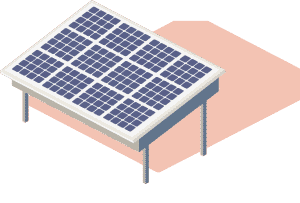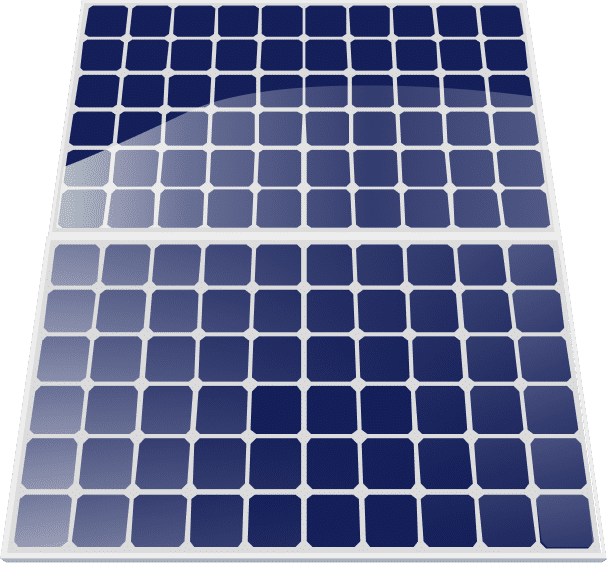Net Metering Solar

Net Energy Metering
Net metering is a high electricity program wherein your electric provider is expected to purchase excess solar power generated from the solar arrays for full energy price.
When your solar power system produces more power than your home requires, it transmits the excess energy to the grid. Your electric company will then compensate you for it. Rooftop solar is a great way to save money by making use of net metering. The best locations for solar installations aren’t the ones that get the most sunlight. It is the state with the most favorable net-metering regulations.
How does Net Metering work?
Net Metering is a credit system that permits solar power to be returned to the grid. It also offsets the electricity you consume from your utility in future. This gives you the economic worth from the energy you generate. You can reduce your monthly electricity costs by properly the size of your solar system.
It is the time of day when the sun is shining, is when solar panels produce the most power. Problem is, the middle of the afternoon tends to be the time when you use the most electricity. Panels are cranking out way more power than your home actually needs.
The excess electricity generated by solar panels gets sent back to grids when the system generates more power than what the home uses. Net meters are used to control excess energy generation. Your utility will charge your account with the retail value of solar energy once the net-metered system is able to send its energy back to the grid.
After dark your solar panels cease producing electricity. The grid then supplies power to the electric meter. The utility then determines the difference between how much electricity you’ve provided to the grid and how much used in determining your final bill at the end of each billing period. This is known as net metering.
These are the key issues to consider when looking at net metering within your state:
Limitations on capacity of the system
The size of the system (or the total capacity) that you are able to install is usually limited by the utilities or public commissions. The policies typically restrict the system’s capacity to certain percentages of your annual consumption of electricity. This is usually between 100 to 150%.


Excess generation credit rate
Excess generation occurs when your system produces more electricity than you consume. Your utility must compensate you with net metering.
Most utilities will reimburse you for excess electricity that you produce over a 12-month period. If that’s the case you are able to use the excess production credits to the extent of one year.
There are a variety of companies that provide the option of compensation for excess solar production. Many utilities credit excess solar production at full retail rates, which allows for the “one one” crediting described above.
Some utilities are now credited with excess generation at lower rates. If this is the case, you’ll need to set up a system to allow you to make use of all the solar energy you can on-site.
Cap on the state-wide net metering
A lot of states have laws that limit how much energy can be net measured. These rules are detrimental to states and restrict solar development. Many cases suggest that legislators set a very low net-metering cap several years long ago (often less than 3-4 percent of the total electricity utility sale).
Many states are considering raising the net metering cap in order to aid Solar’s expansion.

All utilities that are applicable
There may be different net metering regulations and laws among regions. There may be different net metering regulations for rural electric cooperatives, investor-owned utilities electric cooperatives , and municipal utilities.
A lot of state net metering programs, like the ones mentioned above which are only enforced for larger utilities owned by investors. In many cases, municipal electric authorities and rural electric cooperatives are not exempt from these regulations.
Policies to expand net metering
There are many types of net energy metering. In order to increase access to solar energy certain states have passed laws that allow virtual and aggregate net metering.
Additional Barriers
Net metering is a method in which commissioners of public services (i.e. regulators for utilities) may impose additional obstacles to make it more difficult for residents to go green. These could entail additional expenses to connect grids, lengthy approvals for regulatory approval, and confusing pricing.
Other types of net energy metering
Net metering systems that are used for businesses or homes involve one meter on a single property, and energy credits for one account or bill. Imagine residential solar panels. They are installed on a single property and feed into one electric meter. The homeowner is accountable for the utility account.
- The policy of metering aggregate net permits solar owners with several electric meters to credit any excess solar energy they get from one meter to another (on identical property).
- Aggregate net meters - that is more prevalent on farms is often known as “Agricultural Net Metering.” Multiple buildings may be part of an agricultural farm, each having the electric meters. But only one roof can be used for solar. In some cases, a solar-friendly structure might not have a lot of electric demand. The net metering aggregate system permits surplus electricity to be redirected to structures that are more in demand (e.g. a house). Net metering of aggregates in many states is only available to farms
Virtual net Metering
Community Solar can be enabled by virtual net metering. Numerous utility customers, also known as ‘subscribers”, can join to earn credit towards the power generated by a single solar installation in their locality.
Virtual net metering permits people who are solar customers in the community to get credit on their bills for the production of off-site solar installations.
In 2017, less than 20 states had virtual net metering policies. For more details, visit our community, and if you have any questions, please contact us.
Are net metering credits transferable from month to month
It is all dependent on the service. However, most full-retail net billing plans allow energy credits to be transferred from month to month. If you produce more electricity than you consume during the month in question, any surplus net-metering credit could use to reduce electricity that is taken from the grid for the next month.
You’ll usually have more credits during summer as the days get longer and the sun is shining. These summer credits can be used to cut down on your electric bill during winter months.
A utility’s real-time policy, which determines the frequency they purchase credits, will decide whether credits can be carried over month to month. This policy is located in their net metering policy.
What does net metering mean for electricity bills?
The majority of homes produce more electricity during summer months than they will need to, and will draw less electricity from the grid during winter. The variations in electricity production are known, so your utility will not issue a monthly bill for electricity you generate than you need. Instead, you will build credits in the summer months so that you can draw on them during the winter. The system you choose to use will produce enough power to meet the annual energy consumption of your home if it is designed correctly.
You’ll get credit for solar power if your system generates more power than you use in the course of a month. This credit is calculated based on the number of kilowatt hours that you have returned to the grid. To make up the difference, you’ll need to purchase energy from your provider company if you generate less electricity than you consume. In these cases, you’ll be being charged for power but less extra electricity generated by solar panels.
What are the advantages of net metering
Utility bill savings
Net metering is a fantastic option for solar homeowners as it saves them money on their energy bills. Over the life of your solar panel system net metering can save you thousands of dollars.
Solar panels can be utilized to offset the complete costs of solar users’ electricity use within a billing cycle, which we’ve already discussed. However electric charges are subject to fixed costs which net meters can’t eliminate.
Payback periods are shorter
The payback times for regions that offer fully retail net meters will be less than those that don’t. Because solar homeowners reduce their electricity costs and will be able to recover their investment faster This is the reason they’re so sought-after.
A New Jersey solar power system could pay back its debt in between 4 and five years. This is partly due to net meters. The South Dakota system, however, may take as long as 12 years to pay back since it does not have any net meters.
Your solar payback time is not only affected by net metering. The duration of the payback time will be based on a variety of factors, including the size of your photovoltaic system, how much electricity you use, and whether there are incentives or rebates in your region.
This helps reduce the stress on the grid.
Since residential solar panels lessen stress on the electric grid distribution network utilities and their clients get the benefit. Solar homeowners don’t draw energy directly from the grid, rather, they use their own energy.
Additionally in the event that a solar array produces more energy than required, it may be used by other customers of utilities that are not solar to fulfill their energy requirements. This places additional stress on power plants of utility companies.
Is net metering available in all states?
Net metering is technically required in 38 states and Washington D. C. Some major utility companies in Idaho and Texas which also offer net metering for residential solar customers, although they do not have to.
South Dakota and Tennessee are two of the states that do not have any type of net meters or alternative net meters. These states aren’t the only ones to not have net metering , or alternative net metering regulations. Companies in the utility industry all over the U.S. have been trying to cut down on net metering programs in order to boost their profits and save money on solar energy for customers living in the U.S. In states such as Louisiana, South Carolina and California, which are the most solar-friendly, utilities have achieved the desired results.
In the event that you are able to have net-metering available in your area, you can be credited for any surplus energy in either or both of the following methods:
- Net metering at retail rates You are credited for every kilowatt-hour you transmit into the grid. If you are charged 16 cents for each energy unit consumed, then you’ll get 16 cents per kWh exported. This type of net-metering is required in 29 states.
- Net metering using an lower feed-in rate electricity surplus that is sent to the grid will be credited at a lower rate. It is possible to pay 16 cents for consumption, but 10 cents to export. In 17 states that retail-rate net billing is not mandatory Fee-in tariffs, feed-in tariffs and other programs are available.
Use net metering to save by going solar
Since you can conserve all the energy that you generate with solar net metering, it’s the most efficient solar policy. You can then use the remaining energy from grid power at a later date. Net metering can help you cut costs by offsetting your power needs to grid.
While net metering might not be the sole method homeowners are paid by utilities for solar power, it is the most well-known and efficient. Also, make sure you go to the State-sponsored Database on Renewables, Energy and Efficiency(r), which tracks other policies.
If you are interested in learning more about net-metering or other solar power incentives, you can use the Database of State Incentives for Renewables and Efficiency is a fantastic source. Visit the websites of your state’s utility company and government to find out more regarding solar incentive programs.
Financial incentives for going Solar
One of the most effective incentive for solar energy is net meters. It is possible to combine net metering alongside other incentives in order to increase the return on investment.
- You can take 26percent of expense of solar panels as tax deductions in the solar tax credit program of the Federal government. If your solar project was $10,000, you can claim $2,600 as an income tax deduction on your next tax return. This tax deduction is available everywhere within the U.S.
- Depending on where you live depending on your location, you could be eligible for state tax credits. These can be claimed along with the Federal incentive.
- Certain state governments offer solar rebates. These incentives are cash rewards that are subtracted from the price of your solar PV system.
When you are about to sign the contract, it’s important to reach out for quotes. This will enable you avoid poor-quality installation, expensive installations and make sure that you get the best deal possible. Contact us to receive quotations on Texas Solar Group, the best solar provider in your area.
Go solar now while net metering is still available for the best savings
We’ll discuss with you: net metering’s best days are gone. Net-metering’s future is not promising. Net metering, despite being the main driver behind the solar industry, is now under threat by greedy electric utility firms looking to maintain their profits margins.
You can get the most savings from net metering when you install solar as soon as possible. You run the risk that your utility may stop the program. That means you’ll end up paying less in the long run.
Our solar panel calculator will assist you in determining how much solar panels could reduce the cost of electricity. We can give you an estimate that is specific to your home, based on data provided by our installers in the area. This estimate will include solar savings and the cost of solar installation. This will allow you to decide if it is worth the cost.
We keep track of changes to net metering laws across the nation. While some states have expanded net metering, other states try to reverse it. Texas Solar Group is the sole organization that encourages solar owners to push for net-metering advancements in their community and oppose attacks on net-metering.
GET YOUR FREE PROPOSAL IN A FEW EASY STEPS
Fill out the form and our sales consultant will contact you! Once you’ve had your initial consultation, you’ll begin your solar journey.
